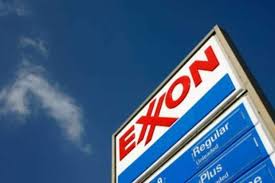Will Exxon Reward Investors? 5 Things to Watch in Earnings

For Exxon Mobil Corp. first-quarter results Friday are a shot at redemption.
A few months ago, weak fourth-quarter 2017 earnings gutted the shares in a six-day rout that helped push the stock to its lowest level in more than two years. A plan announced a few weeks later to hike capital expenditures to more than $ 30 billion a year through the mid 2020s did nothing to calm market jitters, running counter to rivals’ pledge to ease spending.
Now, buoyed by oil prices near $ 70 a barrel in New York, Exxon is poised to present the best quarterly net income since early 2015, if last quarter’s one-off tax reform gain is excluded. On Wednesday, the company gave an early hint on positive results with a higher-than-expected dividend boost that will see investors collect an extra $ 850 million over the next 12 months.
What else to watch for? Production, cash flow, downstream results, natural gas output and, perhaps most important to investors, the possibility of stock buy backs ahead. Here’s a breakdown:
Production
The world’s largest publicly traded oil company is seeking to arrest a long-term decline, with output down five of the last six years. Analysts are seeing some success on that front from Chief Executive Officer Darren Woods.
The company probably pumped the equivalent of 4.074 million barrels of crude a day during the quarter, based on the average estimate from analysts in a Bloomberg survey. That would be 1.9 percent lower than the year-earlier period but higher than the 3.99 million pumped during the last three months of 2017.
Cash Flow
Exxon has departed from the cash-conserving mantra of its rivals, vowing to hike capital expenditure well into the mid-2020s as it invests in what it sees as world-class major projects around the world, from Brazil to Papua New Guinea. Along its commitment to paying a dividend, this investment needs cash.
Free cash flow is expected to be $ 4.63 billion, according to analysts in a Bloomberg survey. That’s about 60 percent higher than the last quarter, but lower than the $ 5.28 billion made a year ago.
Downstream
Exxon’s fourth-quarter results missed estimates in large part due to lower than expected returns at its refineries at a time of good gasoline and diesel margins. While one-time outages are not expected to be repeated, profits are likely to be squeezed due to tighter margins.
U.S. Gulf and East Coast refining margins dropped about 13 percent in the period while in north-west Europe they were the weakest in nearly two years, according to HSBC Holdings Inc.
Gas
Exxon gets more than 40 percent of its production from gas. European production dropped 30 percent from 2014 to 2017, exacerbated by the Dutch government’s decision to reduce output from the Groningen field that the U.S. company operates with Royal Dutch Shell Plc, according to Raymond James. Investors will be listening for management commentary around the asset given that regulators have decided to phase out the field by 2022.
Gas prices traded about 7 percent lower in the first quarter compared with a year ago, according to New York pricing. That said, much of Exxon’s revenue isn’t reliant on market pricing as it comes from long-term supply agreements.
Buybacks
Investors will also be listening closely to any hint from Woods that the company will reinstate its share buyback program, which is a “realistic chance,” in the near future, Pavel Molchanov, a Houston-based analyst at Raymond James & Associates Inc. said in a note April 23.
Buybacks rank below dividends and capital investment in high-return projects in terms of uses of cash, Woods said March 7.
Historically, the company has bought back shares when oil prices were high instead of spending it on “lower return, less advantaged projects.” Now, it has several “advantaged investments” to spend the money on, he said.
